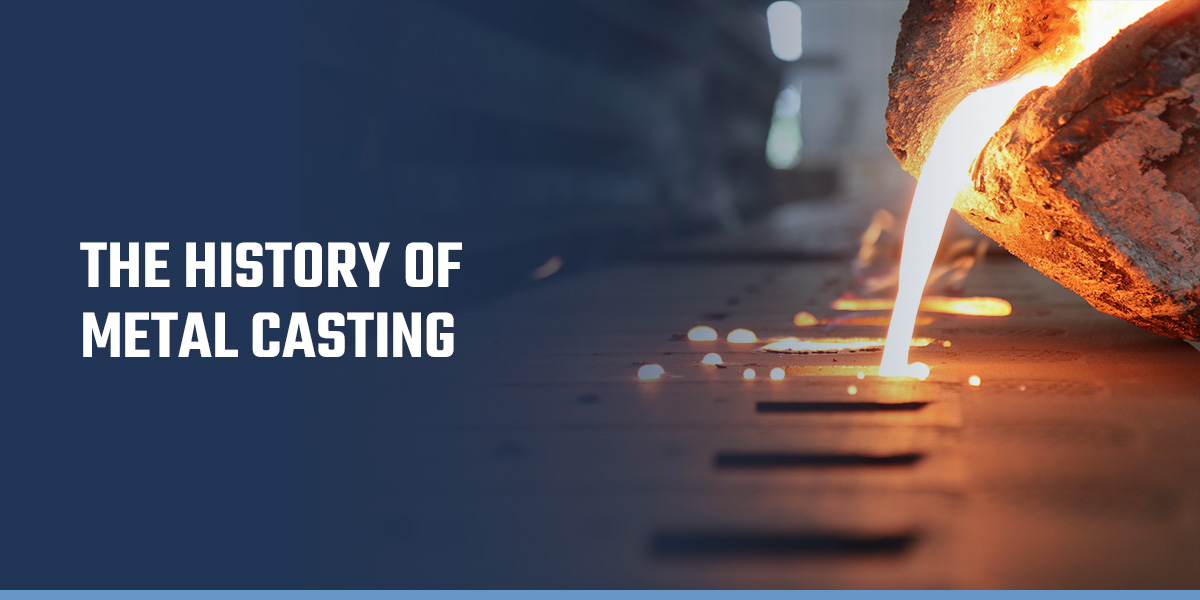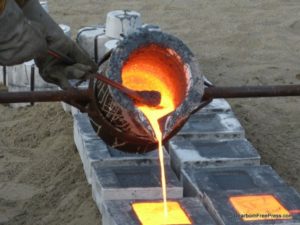The process of Aluminum Foundry and its role in sustainable manufacturing
A Deep Study the Different Kinds Of Metal Casting and Their Utilizes
Metal Casting includes numerous strategies, each customized for certain applications and requirements. From the economical sand spreading method to the precision of financial investment spreading, each procedure has unique advantages. Die casting stands out in high-volume production situations, while lost foam spreading introduces innovative style opportunities. In addition, permanent mold casting is identified for its toughness. Understanding these approaches opens up a home window into their useful usages and effects in different sectors. What lies beneath the surface of these casting methods?
Sand Casting: A Functional and Cost-efficient Approach
Although different casting approaches exist, sand spreading continues to be among one of the most cost-efficient and flexible techniques in the metalworking industry. This method employs a mixture of sand and a binding representative to develop molds, enabling the manufacturing of components in varied shapes and sizes. Sand casting is particularly useful for small to medium production runs, as it calls for minimal in advance investment in tooling compared to various other casting methods.
The procedure begins with the production of a mold and mildew, where liquified steel is gathered to create the preferred object as soon as cooled down. Its flexibility enables the use of numerous steels, consisting of aluminum, iron, and steel. Additionally, sand casting can accommodate complicated geometries, making it appropriate for a variety of applications, from automotive parts to complex artistic pieces. In general, sand spreading's effectiveness and flexibility strengthen its relevance in the manufacturing landscape.
Investment Casting: Precision and Information for Complex Forms
Investment casting stands apart as an approach renowned for its capability to create extremely detailed and complex elements. This procedure includes developing a wax pattern that is covered with a ceramic covering, which is then heated up to get rid of the wax and harden the covering. The outcome is an exact mold and mildew that can catch complex geometric shapes with amazing precision.
This spreading method is especially helpful for generating get rid of thin walls, fine features, and tight tolerances, making it optimal for markets such as aerospace, auto, and medical devices. Financial investment casting suits a selection of steels, including stainless-steel, aluminum, and titanium, allowing suppliers to satisfy details material requirements.
Additionally, the procedure lessens machining requirements post-casting, which can boost efficiency and lower production expenses. On the whole, financial investment spreading is a preferred option for applications where accuracy and detail are vital.
Pass Away Spreading: High-Volume Manufacturing With Excellent Surface Area Finish

Pass away spreading is an extremely reliable production procedure that masters generating large volumes of steel components with outstanding surface finishes. This technique entails compeling liquified metal into a mold tooth cavity under high stress, enabling quick manufacturing cycles and uniformity in the finished items. Commonly utilized products consist of zinc, aluminum, and magnesium, which supply superb mechanical properties and corrosion resistance.
Die casting is especially valuable for industries such as automobile, electronics, and consumer products, where precision and high quality are extremely important. The process enables detailed designs, decreasing the requirement for additional machining and finishing processes. In addition, the smooth surfaces created through die casting commonly need marginal post-processing, resulting in reduced general manufacturing expenses. As a high-volume manufacturing method, pass away casting is perfect for suppliers looking for efficiency without jeopardizing on high quality, making it a favored option for many applications throughout various markets.
Lost Foam Spreading: Cutting-edge Technique for Intricate Styles
Lost foam spreading reinvents the manufacturing of intricate steel components by utilizing an unique process that removes the requirement for standard mold and mildews. Rather than traditional mold-making, this method utilizes a foam pattern that is covered with a refractory material. When the pattern is established, molten metal is poured directly right into the mold, causing the foam to evaporate and leave behind a specific dental caries for the metal to fill. This innovative approach permits elaborate click layouts and comprehensive attributes that may be challenging to achieve with other casting methods.
In addition, shed foam spreading can reduce waste and power consumption, making it an eco-friendly choice. Industries such as auto and aerospace advantage greatly from this technique, as it supports the production of lightweight parts with complicated geometries. On the whole, shed foam casting stands out for its capability to supply premium, personalized steel components successfully.
Permanent Mold And Mildew Casting: Durability and Consistency in Metal Components
Permanent mold and mildew spreading is a very effective method for generating resilient and regular steel parts, leveraging multiple-use mold and mildews that are normally made from steels such as iron or steel. This casting procedure includes pouring liquified metal into these molds, which are preheated to enhance item top quality and decrease issues. The use of reusable mold and mildews not only lessens waste but also permits greater manufacturing rates, making it financially beneficial for makers.
The resulting elements display outstanding dimensional wikipedia reference precision and surface area coating, making them perfect for applications in vehicle, aerospace, and commercial machinery. Furthermore, irreversible mold spreading can accommodate a variety of alloys, even more increasing its convenience. The resilience of the actors components is improved as a result of the controlled cooling prices that promote better grain structures. Generally, this casting method stands apart for its ability to generate top quality metal parts that meet extensive efficiency standards, making sure dependability popular environments.
Frequently Asked Questions
What Materials Can Be Made Use Of in Different Metal Casting Procedures?

Various products can be made use of in Metal Casting processes, consisting of aluminum, bronze, iron, and zinc. Each material supplies one-of-a-kind properties, influencing the spreading technique's performance, toughness, and viability for various applications in production.
How Do Casting Techniques Influence the Mechanical Properties of Metals?
Casting techniques considerably influence the mechanical residential properties of steels, influencing elements like toughness, solidity, and ductility. Variations in cooling prices and mold and mildew products can result in various microstructures, inevitably influencing the performance of the end product.
What Are the Environmental Influences of Metal Casting Procedures?
Metal Casting procedures can result in air and water air pollution, resource depletion, and significant energy consumption (Aluminum Castings). Furthermore, the generation of waste products and greenhouse gas exhausts greatly impacts the atmosphere and contributes to climate modification
How Do You Pick the Right Casting Approach for a Project?
Picking the best casting approach entails examining job demands, product properties, complexity, and manufacturing volume. Factors like price effectiveness, finish quality, and lead time additionally play important functions in establishing one of the most ideal strategy.
What Safety and security Preventative Measures Should Be Taken Throughout Metal Casting Workflow?
Throughout Metal Casting operations, security precautions include using protective equipment, reference ensuring appropriate ventilation, conducting tools inspections, preserving a clean work space, and having emergency protocols in position to deal with prospective risks like burns or hazardous fumes.
From the affordable sand spreading method to the accuracy of financial investment casting, each procedure has special advantages. Die casting is a highly reliable manufacturing procedure that stands out in producing huge volumes of steel components with phenomenal surface area finishes. Lost foam casting transforms the production of intricate metal parts by making use of an unique process that eliminates the demand for typical mold and mildews (Aluminum Foundry). Long-term mold spreading is an extremely efficient technique for producing long lasting and regular metal parts, leveraging recyclable molds that are commonly made from steels such as iron or steel. Numerous materials can be used in Metal Casting procedures, consisting of aluminum, iron, bronze, and zinc